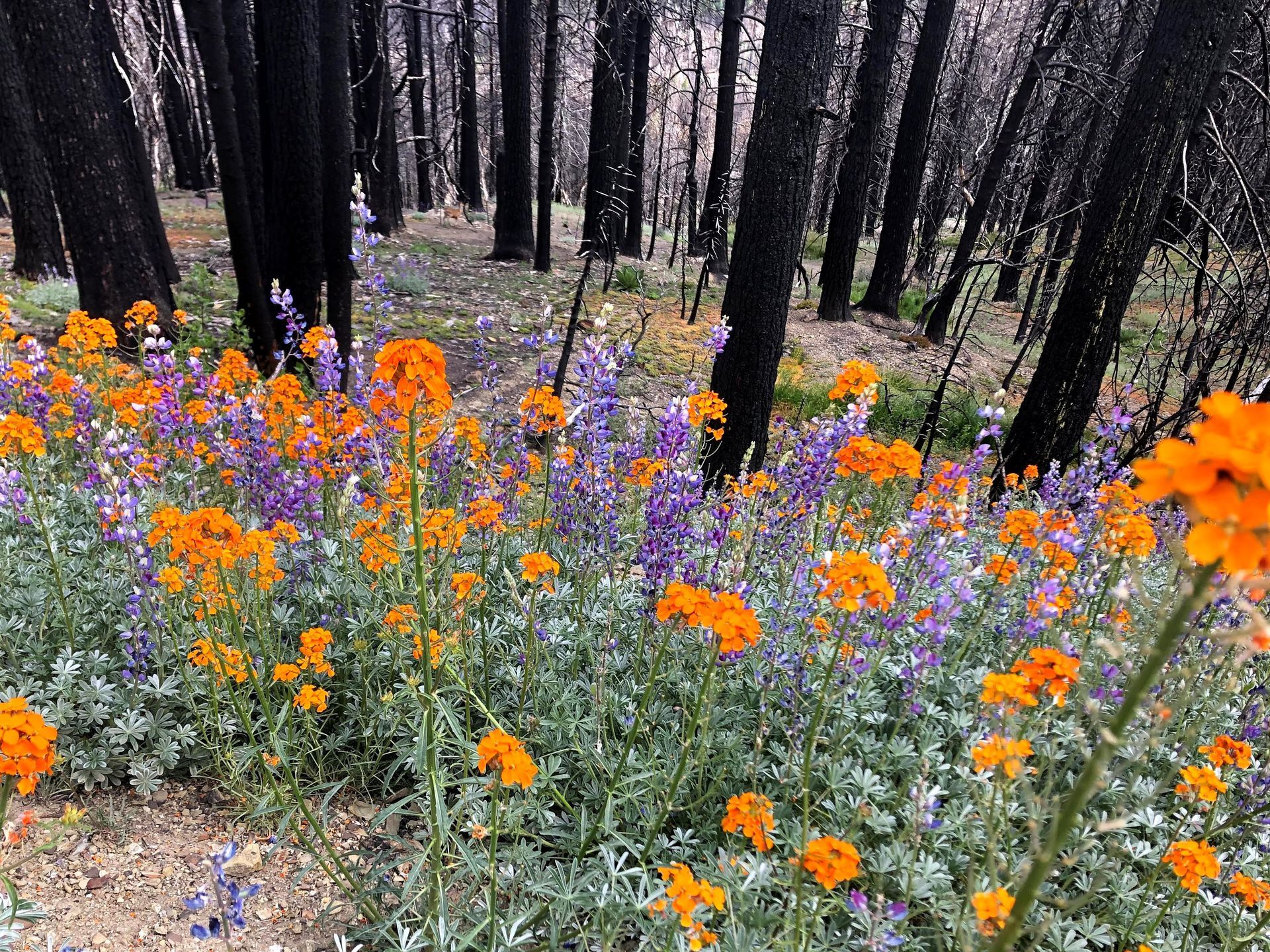Monumental Questions - What are the best trails for wildflower viewing in the Berryessa Snow Mountain National Monument?

Snow Mountain Wilderness Wildflowers
Every January through May, the hillsides of Berryessa Snow Mountain National Monument become brilliant with color. Slopes many miles away appear orange with California Poppies (Eschscholzia californica) while close inspection of the ground at one’s feet shows many smaller, less noticeable flowers like common fringe pod (Thysanocarpus curvipes). Combined with the perfect temperatures this time of year, now is your chance to get out and enjoy the color and beauty! Here are some of our favorite trails for wildflower spotting.
Pope to Putah: This trail is located west of Lake Berryessa near Pope Valley. The trail winds through chaparral before entering oak woodland near Putah Creek. Warrior’s plume (Pedicularis densiflora), Indian paintbrush (Castilleja affinis), and golden fairy lanterns (Calochortus amabilis) are common in chaparral while poppies (Eschscholzia spp.) and mosquito bills (Primula hendersonii) are abundant in the oak woodland.
Stebbins Cold Canyon: While not included within the boundaries of the monument Stebbins Cold Canyon is surrounded by monument lands and is one of the closest access points to the monument. This is a very popular hiking area – hiking during the week or starting early on the weekend is the best way to avoid the crowds. This time of year it is easy to see why it is so popular – wildflowers, more wildflowers, and views. Western redbud (Cercis occidentalis), lupine (Lupinus spp.), and poppies (Eschscholzia spp.) dominate the display but there are many other species to enjoy. Woodland star (Lithophragma affine), Fremont’s death camas (Toxicoscordion fremontii), and mule’s ears (Wyethia glabra) are common.
Road 53: Heading into the hills west of Guinda, County Road 53 takes hikers through open grassland and into a riparian ecosystem before chaparral takes over. Manroot (Marah fabacea), larkspur (Delphinium sp.), California bee plants (Scrophularia californica), and checker lilies (Fritillaria affinis) are visible along with purple owl’s clover (Castilleja exserta) and many species of lupine (Lupinus spp.).
Redbud Trail: This is a relatively easy hike that provides a wide variety of ecosystems: oak woodland, chaparral, riparian. The wide variety of flowers one sees along this trail makes it worth the trip to the trailhead. Bird’s-eye (Gilia tricolor), warrior’s plume (Pedicularis densiflora), wallflower (Erysimum capitatum), larkspur (Delphinium sp.) and lupine (Lupinus sp.) are common.
Bear Valley: Bear Valley, located north of CA-20, is known for its amazing wildflower displays. Cream cups (Platystemon californicus), goldfields (Lasthenia spp.), fiddlenecks (Amsinckia spp.) and MANY more. When making the trip to Bear Valley, do not forget to look along the roadside on the drive in. You may see mariposa lilies (Calochortus luteus), bunchleaf penstamen (Penstemon heterophyllus), and tidytips (Layia sp.).
West Crockett Trailhead: This trailhead is at a higher elevation and located on the northern side of Snow Mountain Wilderness which means that it typically blooms later in the season than the rest of the monument. Flowers one can expect to see on this trail are columbine (Aquilegia sp.), red larkspur (Delphinium nudicaule), and large camas (Camassia leichtlinii).
These are just some of the trails you can explore to enjoy the flowers. Check out Tuleyome's trail guide which has details about many trails in the region, all of which have great wildflowers.
We hope you get out and enjoy the amazing wildflowers in Berryessa Snow Mountain National Monument. Feel free to share your photos of wildflowers with us by tagging us on Facebook, Twitter, and Instagram!
-Nate Lillge; nlillge@tuleyome.org
Adventures and Engagement Director
Certified California Naturalist
RECENT ARTICLES






